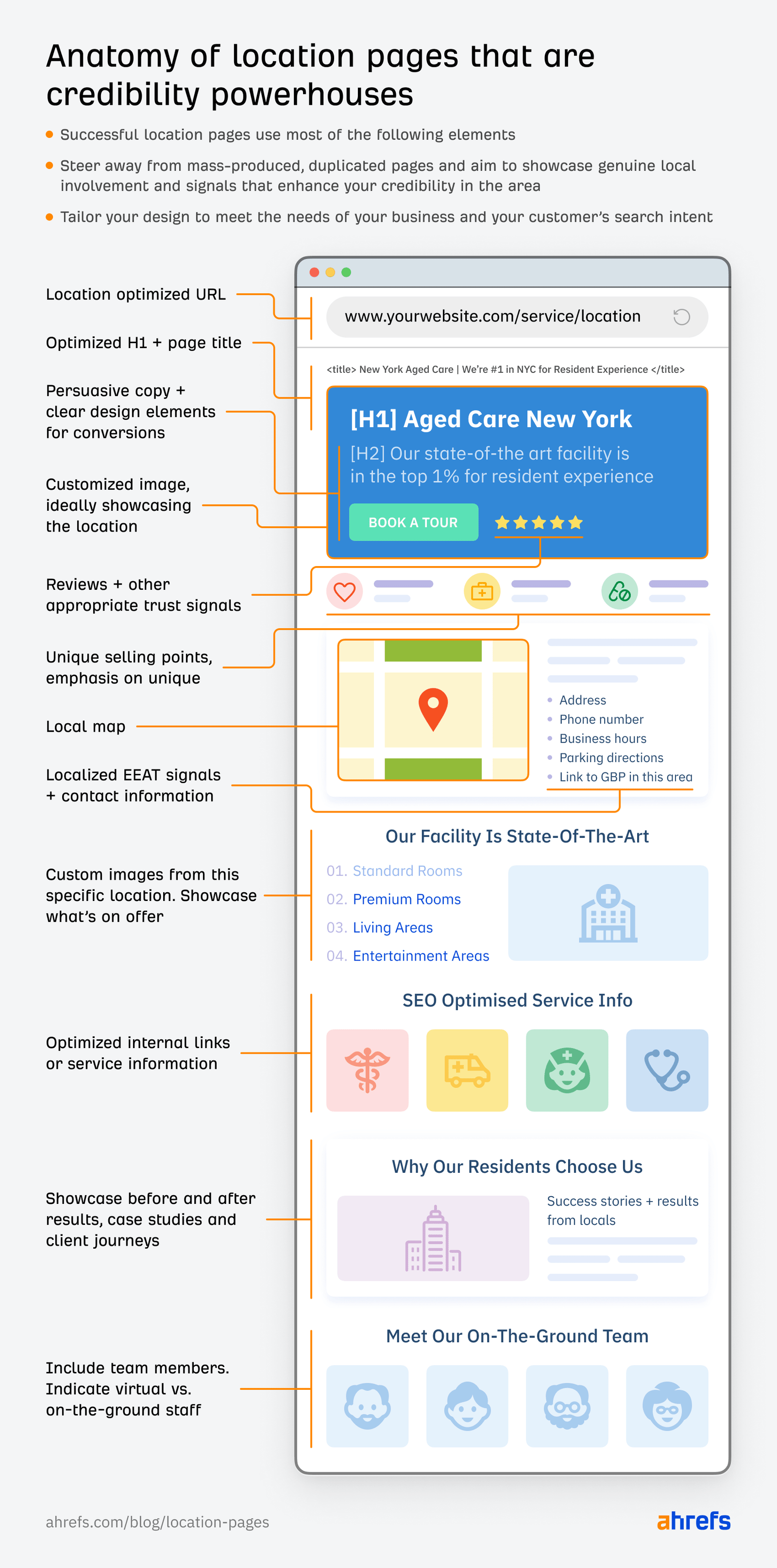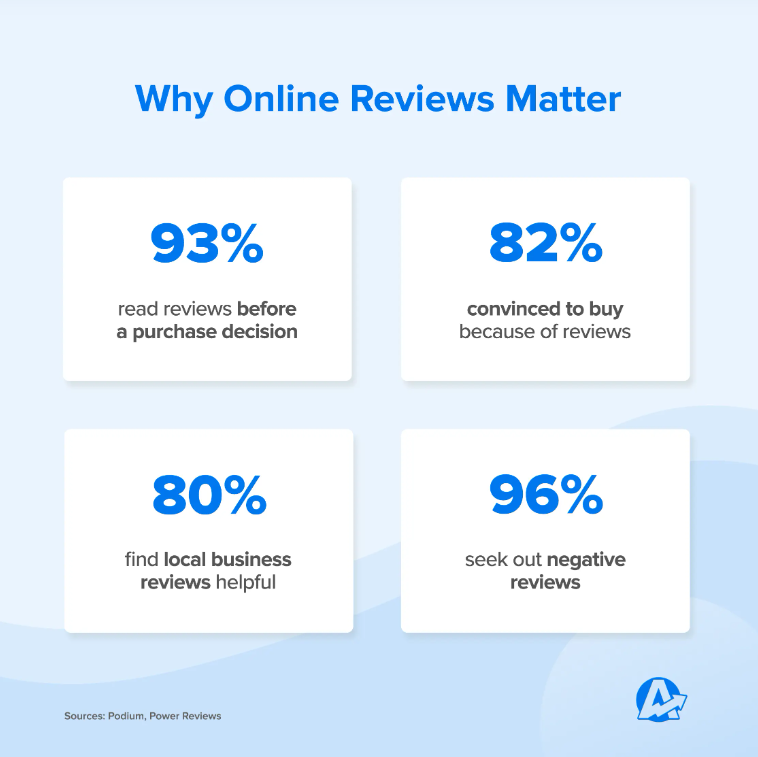With over 46% of all Google searches having local intent, optimizing for “near me” searches has become a must for businesses aiming to capture local customers in real-time. “Near me” queries have increased significantly over the past few years, and in a mobile-first world, users expect immediate results tailored to their location.
This guide will give you advanced insights into capturing this market, helping you appear consistently in these results and stay competitive in your local area.
So, let’s dive right in!
Optimize Your Google Business Profile (GBP)
Goal: Ensure your Google Business Profile (GBP) is fully optimized to capture local searches effectively.
a. Claim and Verify Your GBP
First, claim and verify your GBP. Google uses the verification status of your business to determine credibility. Verified profiles are prioritized for local queries, making this step foundational. To start:
- Verification Methods: Google offers multiple verification methods (e.g., postcard, phone, email). Choose the quickest option and verify your profile fully.
- Avoid Duplicate Listings: Duplicate listings confuse Google’s algorithms and can reduce ranking potential. Use the Google Business Profile Manager to consolidate any existing listings.
b. Optimize Every Detail (Beyond the Basics)
Unlike most guides that cover only the essentials, advanced GBP optimization includes leveraging categories, attributes, and services:
- Primary and Secondary Categories: Set a specific primary category (e.g., “Chiropractor” rather than just “Medical Services”) to boost relevance. Add secondary categories (e.g., “Sports Injury Chiropractor”) to expand your reach.
- Attributes for User Engagement: Attributes like “women-led” or “family-friendly” add personalization, giving your listing appeal for targeted audiences.
- Services and Product Details: For service-based businesses, list each service with keywords that reflect local search terms users might use. For example, if you run a spa, include “massage near me” or “facial spa near me” in the services section.
c. Regularly Update Your GBP with Posts and Photos
Frequency matters here—businesses that post weekly see 20% more clicks to their website. Use this to your advantage by posting:
- Events and Promotions: Keep posts engaging with localized promotions (“Discounted Chiropractic Sessions for [City] Residents!”).
- Visual Content: High-quality, geotagged images and videos improve engagement. Include images of your storefront, staff, and products. Regular updates also signal that your business is active, increasing your chance of appearing for “near me” searches.
Pro Tip: Use analytics to see which posts get the most engagement, and optimize future posts around that data. Experiment with CTAs and visuals, ensuring posts are not only informative but highly clickable.
Build Location-Specific Landing Pages to Establish Topical Authority
Increase your relevance for local searches by creating location-focused pages that address users’ specific needs and intent.

Source
a. Create Unique Landing Pages for Each Location
Building individual landing pages for each location you serve is critical for showing up in “near me” searches across multiple areas. Avoid copy-pasting content; each page should be crafted uniquely with these best practices:
- Local Keyword Integration: For instance, rather than a generic “Our Services” page, structure it around “Best Plumbing Services in [Neighborhood/City]” or “Reliable HVAC Repair in [Location].”
- Service Area Clarity: Add a section that lists the exact neighborhoods, zip codes, or landmarks. This strengthens your topical authority by signaling your relevance to each area.
b. Use Hyper-Local Schema Markup
Schema markup helps Google understand the specific details of your business. Adding LocalBusiness schema with relevant parameters enhances your appearance in “near me” searches:
- Advanced Schema Options: Incorporate Place schema to identify neighborhoods or shopping centers where your business is located, or Review schema to show ratings.
- Example Implementation: Add geo coordinates, service areas, and product offerings (if relevant) directly in the code. Using structured data testing tools will help you confirm proper implementation and diagnose any issues.
c. Include User-Generated Content and Testimonials on Location Pages
Featuring local testimonials and user-generated content increases credibility and social proof. Not only does this improve trust, but it also reinforces your business’s relevance in specific locations:
- Client Stories: Highlight success stories from local clients. If you’re targeting a neighborhood in Boise, ID, share a testimonial from a Boise customer that reflects how your service addressed their unique local needs.
- Image Galleries of Local Projects or Work: Photos that illustrate your work at local spots (e.g., installing equipment at Boise Public Library) create a visually engaging experience and build further topical relevance.
Collect Customer Reviews for Local Trust and SEO Value
Boost local rankings and user trust by securing and managing customer reviews across Google and other local platforms.

Source
a. Focus on Google Reviews as a Priority
Google weighs reviews heavily in its local ranking algorithm. To capture these benefits:
- Automated Review Requests: Use CRM tools to automatically request reviews after a customer interaction. Aim for fresh, recent reviews as they are given more weight by Google.
- Respond to All Reviews: Engaging with positive and negative reviews signals that you’re attentive to customer needs, boosting your reputation.
b. Diversify Reviews Across Niche and Local Sites
Beyond Google, target sites relevant to your industry, like Yelp for restaurants or Healthgrades for medical providers. This strengthens your online presence:
- Top Review Platforms for Local SEO: Claim profiles on Bing Places, Facebook, and niche-specific review sites to build credibility.
- Structured Data Markup for Reviews: Apply Review Schema to display star ratings in SERPs, increasing click-through rates.
c. Incentivize User-Generated Content and Testimonials
Photos, videos, and client stories add depth to your reviews. For instance, before-and-after photos for service-based businesses build user trust and appeal.
Secure Local Citations and Directory Listings for Authority Building
Create a robust foundation of accurate, consistent citations across directories to signal Google your local relevance.
a. Audit Existing Citations for Consistency
Even minor discrepancies in your Name, Address, and Phone (NAP) can harm local SEO efforts. Start with a full audit:
- Tools to Use: Moz Local or Yext to identify and fix inconsistencies across directories.
b. Submit to High-Impact Directories and Niche Sites
Prioritize high-authority and industry-specific directories:
- Top Directories: Google My Business, Yelp, and Foursquare for universal visibility.
- Local Directories: Depending on your area, submit to city-specific sites or chambers of commerce.
- Niche-Specific Directories: For example, healthcare providers can benefit from Healthgrades, while legal firms should utilize Avvo.
c. Optimize Directory Profiles with Rich Descriptions
Use detailed descriptions that incorporate target keywords and local identifiers (e.g., “Best Plumber in Salt Lake City”), strengthening your listing’s relevance for “near me” queries.
Mobile Optimization: Make Your Website Local and User-Friendly
Ensure that mobile users can easily access information, especially since most “near me” searches happen on mobile devices.
a. Improve Page Load Speed and User Experience (UX)
Google’s Core Web Vitals metrics are essential for local SEO:
- Optimize for Speed: Compress images, use a content delivery network (CDN), and prioritize lazy loading.
- Mobile-Friendly Design: Simplify navigation and reduce pop-ups that hinder user experience.
b. Enable Click-to-Call and Location-Specific CTAs
Make it easy for mobile users to connect with your business immediately:
- Click-to-Call Buttons: Mobile visitors often want to call immediately; this is a crucial feature for capturing leads.
- Interactive Maps and Directions: Embed Google Maps directly on your site with location pins and directions for easy navigation.
c. Implement AMP (Accelerated Mobile Pages)
AMP optimizes page speed and is particularly beneficial for content-heavy pages. Although not directly a ranking factor, AMP helps improve load time, which indirectly supports SEO performance.
Create Locally Optimized Content That Answers User Intent
Address hyper-local queries by creating highly relevant, intent-driven content.
a. Create “Local Guides” and Hyper-Local Blog Content
Go beyond standard service pages by building in-depth guides and resources related to your area:
- Local Event and Community Content: Write about events or news that impact your community to capture local interest and drive more traffic.
- FAQ Sections with Local Relevance: Address common questions like “What’s the best time for HVAC maintenance in Raleigh?” to satisfy immediate search intent.
b. Integrate Local Keywords Naturally
Conduct in-depth research for local keyword variants:
- Tools: Google Keyword Planner and tools like BrightLocal to identify relevant local keywords.
- LSI (Latent Semantic Indexing) Keywords: Use related keywords that align with local intent, like “nearby plumbers” or “electrician in Boise, Idaho.”
Develop a Local Link-Building Strategy
Goal: Build authority with links from local businesses, news sites, and industry-specific sources.
a. Secure Links from Local Partners and Businesses
Collaborate with local businesses for backlinks:
- Sponsor Local Events: Many local events provide link opportunities on their sites.
- Partner Content or Guest Blogging: Write for local blogs or participate in “local business spotlights” to gain backlinks.
b. Earn Links from Local Media and Newspapers
If you’re organizing an event, issuing a press release, or launching a new service, pitch it to local media outlets to attract coverage and links.
Optimize for Voice Search with Conversational and Localized Content
Capture traffic from voice searches, which often have strong local intent.
a. Use Conversational Keywords and Question Phrases
Structure content to align with how people naturally speak:
- Include FAQ Sections: Cover typical voice queries like “Where can I find a plumber near me?”
- Long-Tail Keywords: Voice searches tend to be longer, so incorporate long-tail, conversational keywords naturally.
b. Apply Schema Markup for Enhanced Search Visibility
FAQ Schema and LocalBusiness Schema increase your chances of appearing in voice search results and rich snippets, offering a direct answer for user queries.
Track and Adjust Strategies Based on Local SEO Analytics
Monitor your local SEO progress through relevant KPIs to optimize ongoing efforts.
a. Measure Traffic and Engagement with Google Analytics
Track local website traffic and engagement rates to gauge performance:
- Geo-Focused Reports: Use Google Analytics’ geographic reports to identify top-performing areas.
- User Behavior Analysis: Evaluate bounce rates and session durations to understand how well your content meets local user expectations.
b. Monitor GBP Insights
Google Business Profile provides specific metrics that are invaluable:
- Direction Requests and Click-to-Call Data: Track how often users request directions or call directly from your GBP.
Enhance E-A-T with Authoritative Content and Local Expert Collaborations
Goal: Establish your website as a credible, trusted source for local queries.
a. Collaborate with Local Experts for Content Authority
Incorporate quotes, interviews, or blog posts from local experts to boost content authority:
- Guest Contributions: Partner with recognized figures in your niche to create content, such as “Health Tips from Local Experts” for medical practices.
- Credible Sources: Link out to credible sources and statistics within your content.
b. Build an Authoritative About Page and Team Profiles
Include bios and credentials on your About page and team member profiles to enhance authority and trustworthiness.
Final Thoughts
Optimizing for “near me” searches isn’t just a strategy; it’s a long-term commitment to understanding and serving your local audience. By focusing on local SEO fundamentals, leveraging tools like Google Business Profile, building local partnerships, and listening to customer feedback, your business can rise as a trusted choice in the community.
Remember, the key is not just visibility but relevance and trust.


